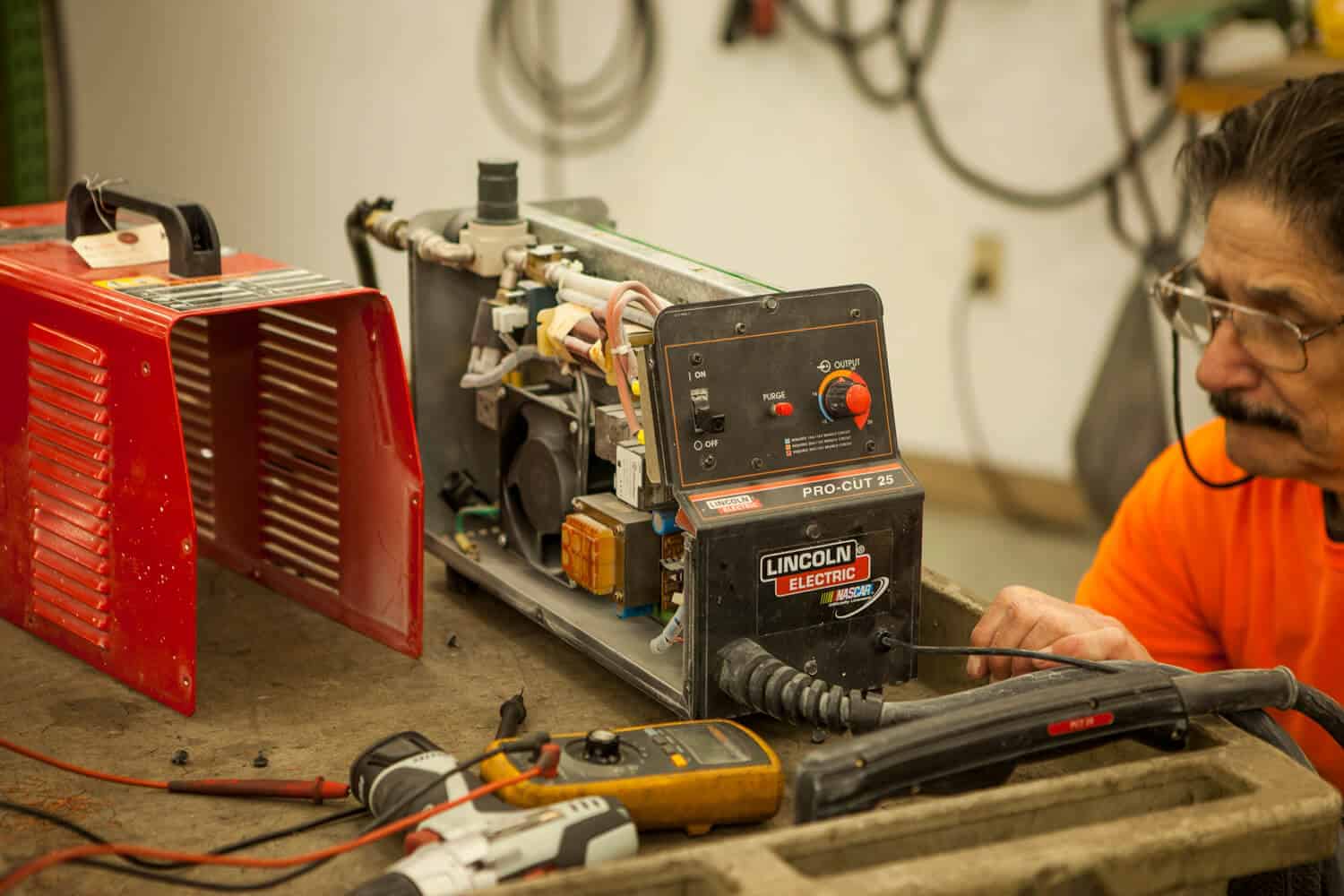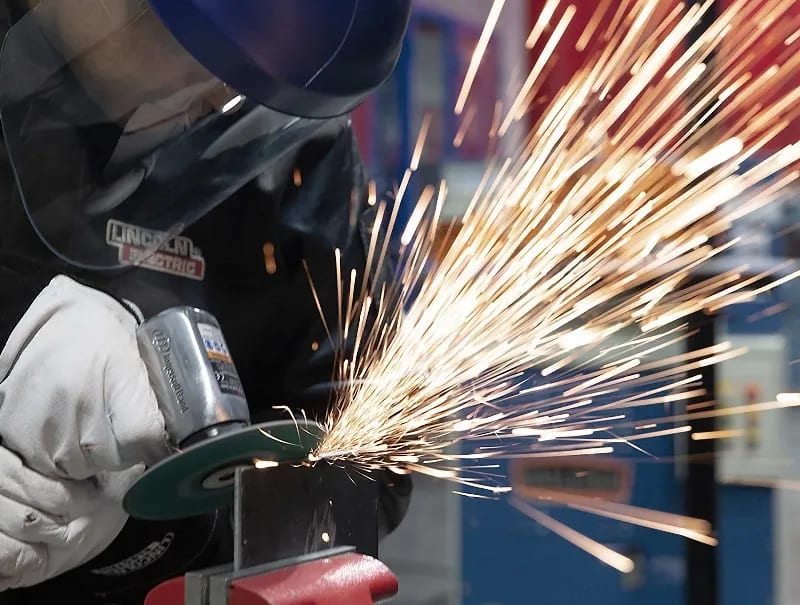Everything about Welding: Key Insights Into Techniques and Best Practices for Success
Welding includes a variety of methods, each matched for certain materials and applications. Understanding these methods, such as GMAW, SMAW, and TIG, is vital for attaining suitable results. The right tools and safety and security practices can not be ignored. As prep work and troubleshooting play important duties in the welding procedure, grasping these components can substantially boost the top quality of the end product. What are the vital variables that ensure a successful weld?
Understanding Different Welding Strategies
Welding methods incorporate a selection of approaches, each matched to particular applications and products. Amongst one of the most common methods are Gas Metal Arc Welding (GMAW), Shielded Steel Arc Welding (SMAW), and Tungsten Inert Gas Welding (TIG) GMAW, also known as MIG welding, is preferred for its rate and flexibility, making it suitable for thin products. SMAW, or stick welding, is favored for its simplicity and efficiency in exterior settings, especially with thicker steels. TIG welding offers precision and control, making it ideal for complex work and non-ferrous steels (Fabrication). Each technique has its distinct benefits and factors to consider, permitting welders to pick the best technique based on the task's needs, material type, and preferred outcomes. Understanding these methods is necessary for successful welding
Vital Welding Equipment and Tools
While various welding strategies need details skills, the ideal devices and devices are equally vital for attaining top quality results. Vital welding devices consists of welding makers, which differ depending on the method-- such as MIG, TIG, or stick welding. Safety equipment, consisting of gloves, aprons, and headgears, assurances safety and security and convenience during the process. In addition, clamps and components help safeguard materials in position, making sure precision in welds. Consumables like welding poles, cord, and securing gas are likewise essential components that affect the quality of the weld. Devices such as cutters and mills help with surface area preparation and post-weld completing, contributing to a professional outcome. Spending in top notch equipment ultimately boosts the effectiveness and effectiveness of welding projects.
Security Practices in Welding
Correct security methods are necessary in the welding sector to shield employees from possible dangers. Welders should wear suitable personal safety devices (PPE), consisting of safety helmets with appropriate shading, gloves, and flame-resistant garments. Appropriate air flow is essential to minimize exposure to harmful fumes and gases generated during the welding process. Furthermore, workers ought to be trained in the correct handling of welding devices to avoid crashes. Fire safety procedures, such as keeping combustible products far from the welding area and having fire extinguishers readily available, are essential. Normal inspections of devices and workspaces can aid determine potential dangers prior to they bring about crashes. By sticking to these security techniques, welders can produce a more secure working setting and minimize dangers connected with their trade.
Readying Materials for Welding
Preparing products for welding is a vital action that significantly influences the quality and stability of the end product (Montana Mobile Welding and Repair Fabrication). Proper prep work includes cleaning up the surface areas to remove contaminants such as dust, corrosion, and oil, which can endanger the weld. Methods such as grinding, sanding, or making use of solvents are commonly used to accomplish a clean surface. In addition, ensuring that the materials fit together snugly is Homepage crucial; spaces can lead to weak welds. It's additionally important to take into account the placement and positioning of the parts, as this will certainly influence the convenience of welding and the last outcome. Lastly, choosing the suitable filler product and guaranteeing compatibility with the base steels is vital for achieving solid, resilient welds
Tips for Achieving High-Quality Welds
Accomplishing top quality welds calls for attention to detail and adherence to ideal methods throughout the welding procedure. Correct joint prep work is essential, ensuring surface areas are totally free and tidy from impurities. Choosing the appropriate filler material and welding method based upon the base metals is important for optimal bonding. Maintaining constant travel speed and angle while welding can stop flaws and promote harmony. Additionally, regulating warm input is essential; too much warmth can result in warping and weakened joints. Routinely examining the welds throughout the process enables immediate changes if required. Using ideal post-weld treatments, such as cleaning and stress alleviation, can boost the toughness and honesty of the weld, inevitably guaranteeing an effective result.
Fixing Common Welding Issues
Welding often provides difficulties that can affect the top quality and honesty of the last item. Usual problems such as porosity, inconsistent weld beads, and overheating can emerge, each needing details troubleshooting techniques. Recognizing these problems is necessary for welders to improve their abilities and achieve perfect outcomes.
Porosity Problems Discussed
Although porosity can often be neglected, it stays an important problem in welding that can endanger the honesty of an ended up item. Porosity refers to the visibility of tiny gas pockets within the weld bead, which can lead and deteriorate the joint to premature failure. This problem normally arises from impurities, dampness, or inappropriate shielding gas coverage throughout the welding procedure. To mitigate porosity, welders should verify that the base materials are tidy and dry, make use of ideal protecting gases, and preserve constant welding criteria. Frequently checking the devices and atmosphere can likewise help recognize potential problems before they materialize in the weld. Dealing with porosity properly is important for attaining strong, long lasting welds that meet top quality requirements.

Inconsistent Weld Beans
Irregular weld beads can greatly impact the high quality and stamina of a completed product. Various variables contribute to this concern, including incorrect traveling speed, incorrect amperage settings, and inconsistent electrode angles. When the welder relocates as well quickly, a grain might show up narrow and lack infiltration, while relocating as well slowly can trigger too much build-up. Furthermore, making use of the incorrect amperage can cause either undercutting or extreme spatter, both of which concession weld stability. The welder's method, such as irregular torch motion, can additionally result in uneven bead look. To mitigate these troubles, welders ought to concentrate on maintaining steady, controlled movements and guaranteeing appropriate equipment setups to accomplish harmony in their welds. Consistency is vital to accomplishing strong and trusted welds.
Overheating and Warping Issues
Extreme heat during the welding procedure can bring about substantial overheating and warping concerns, affecting the structural integrity of the work surface. These troubles usually show up as distortion, which can jeopardize alignment and fit-up, making more assembly testing. Aspects contributing to overheating have a peek at this website include the choice of welding criteria, such as voltage and travel speed, in addition to the kind of material being welded. To reduce these problems, welders must keep constant travel speed and appropriate warm input while keeping an eye on the work surface temperature level. In addition, preheating or post-weld warm therapy can help ease stress and anxieties brought on by fast cooling - Montana Mobile Welding and Repair Belgrade Fabrication. Regular examination and adherence to ideal techniques are vital in protecting against getting too hot and making sure the longevity and integrity of welded structures
Frequently Asked Concerns
What Are the Career Opportunities in the Welding Industry?
The welding sector offers diverse profession opportunities, consisting of placements as welders, educators, inspectors, and engineers. Specialists can work in manufacturing, construction, aerospace, and automobile fields, gaining from solid demand and affordable incomes in numerous functions.
Just How Can I Boost My Welding Speed Without Giving Up High Quality?
To enhance welding rate without sacrificing high check here quality, one should exercise efficient strategies, preserve tools, enhance setups, and boost hand-eye sychronisation. Routine training and seeking comments can also considerably add to accomplishing quicker, premium welds.
What Certifications Are Readily Available for Welders?
Countless qualifications exist for welders, including those from the American Welding Society (AWS), the National Facility for Construction Education and Study (NCCER), and various industry-specific organizations. These qualifications improve employability and demonstrate skill effectiveness.
Exactly How Does Welding Affect the Qualities of Metals?
Welding affects the properties of metals by modifying their microstructure, which can cause adjustments in strength, hardness, and ductility. Heat input and cooling rates throughout the process considerably affect these material features.
Can I Weld Dissimilar Metals With Each Other?
